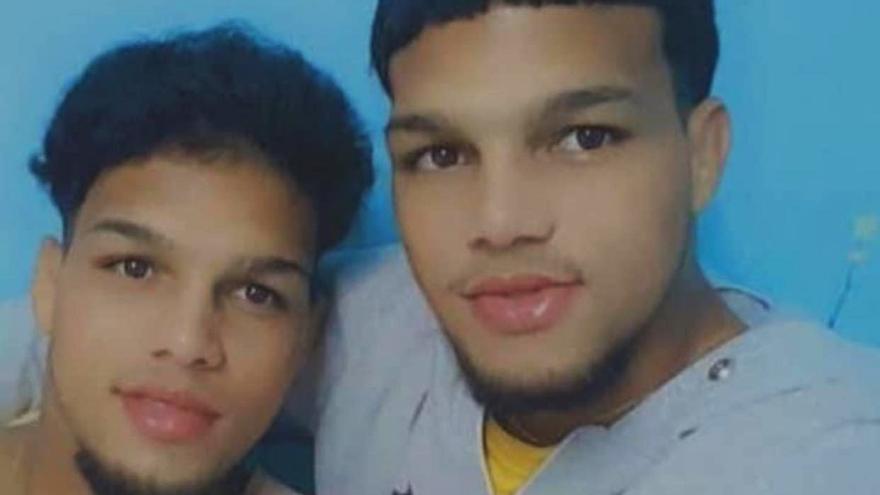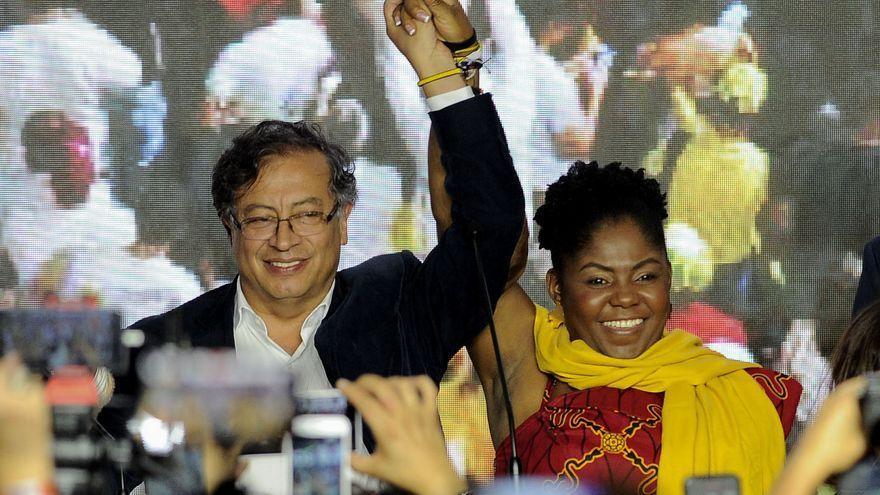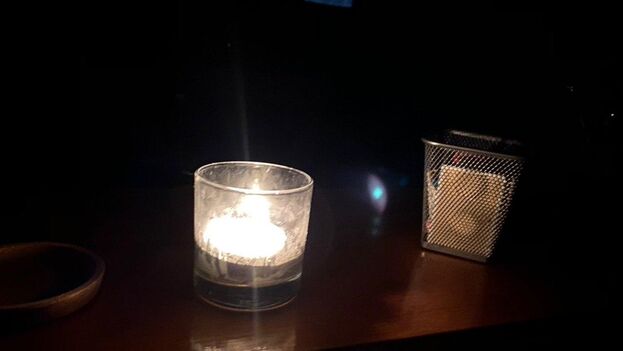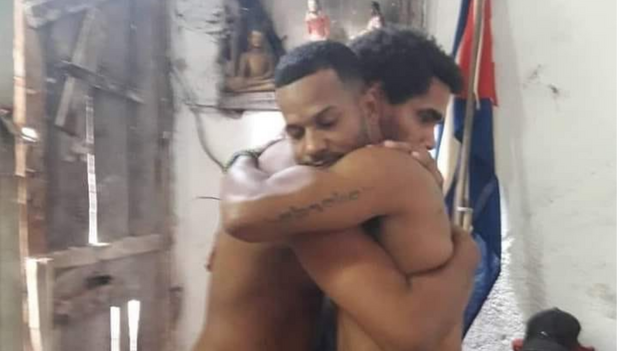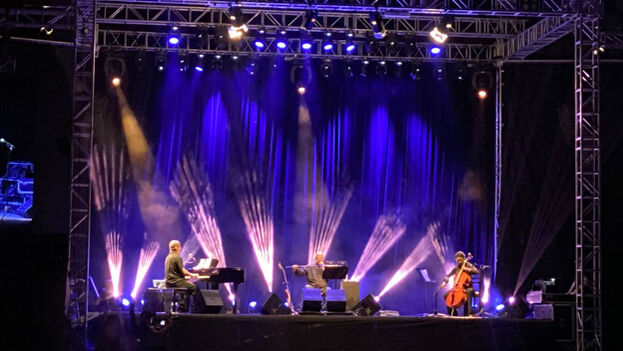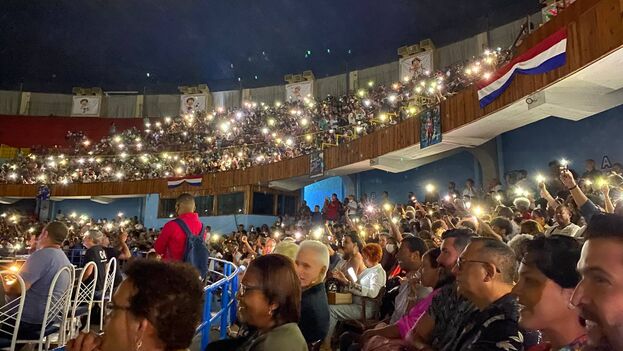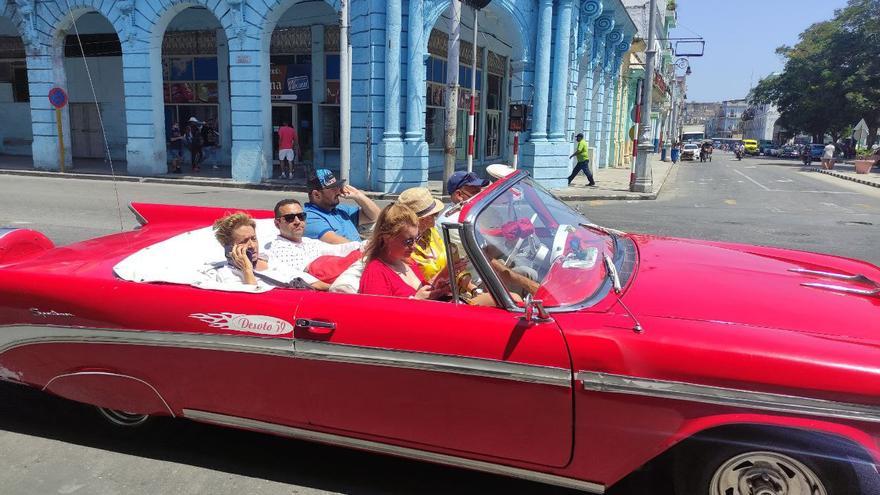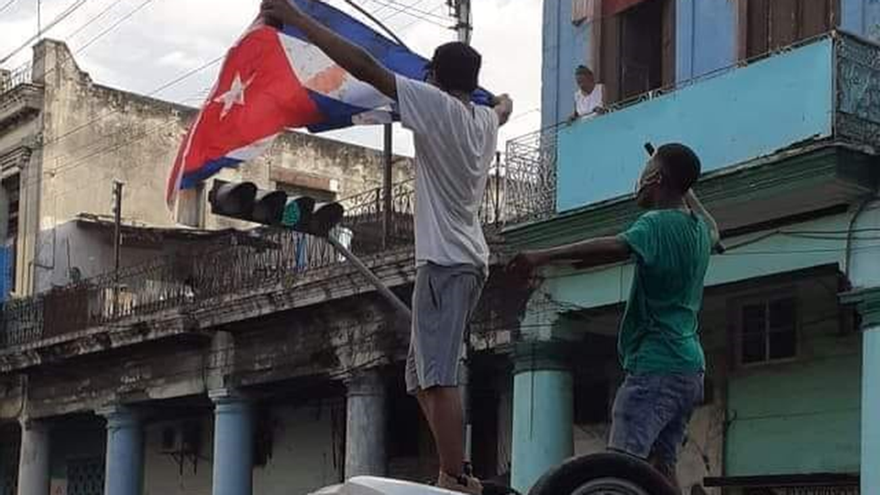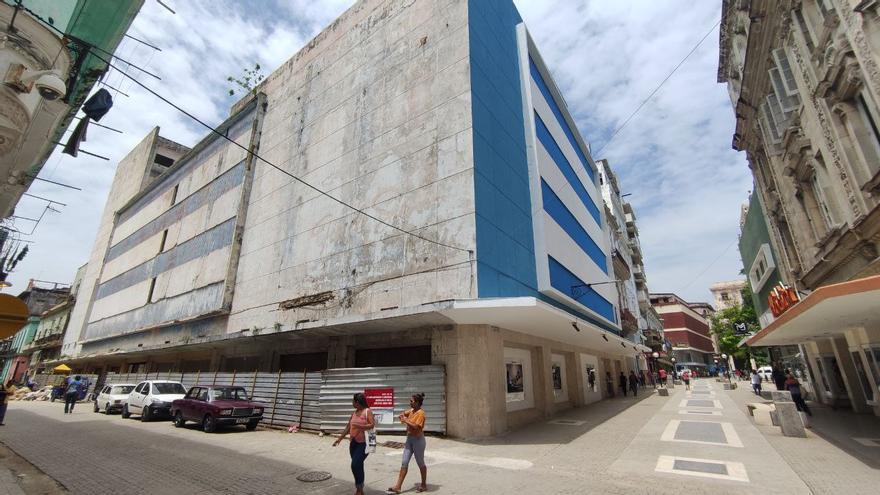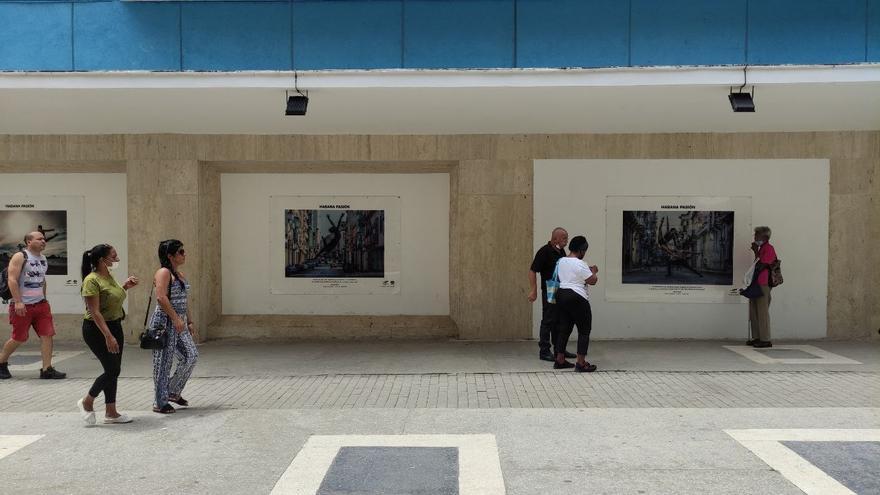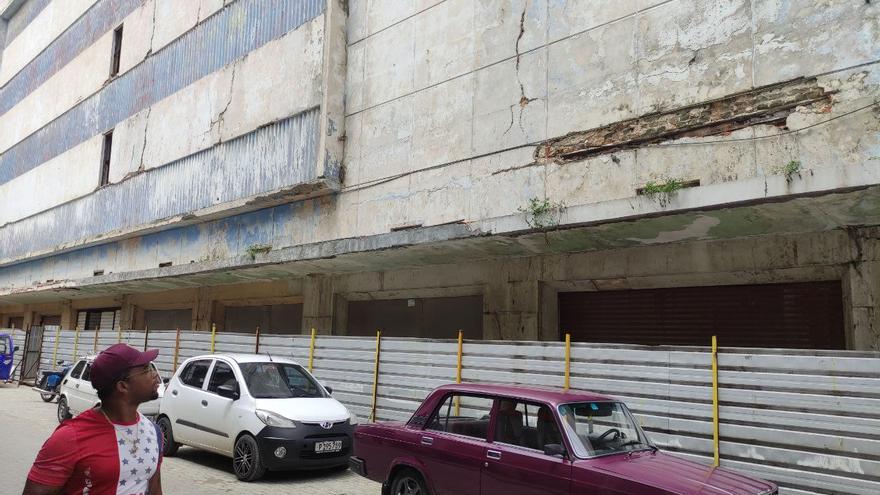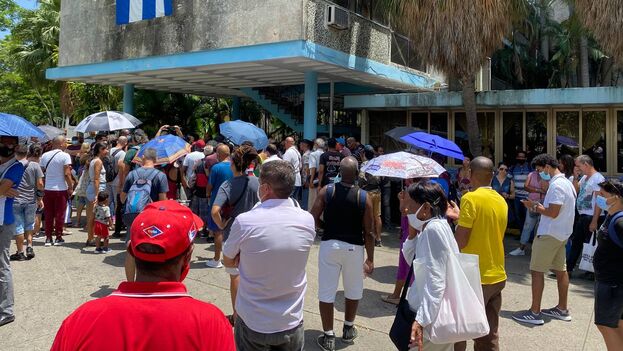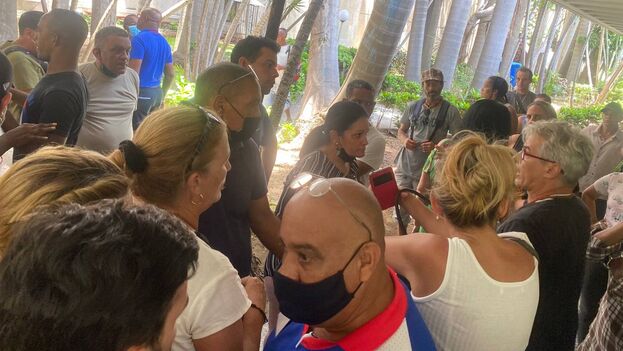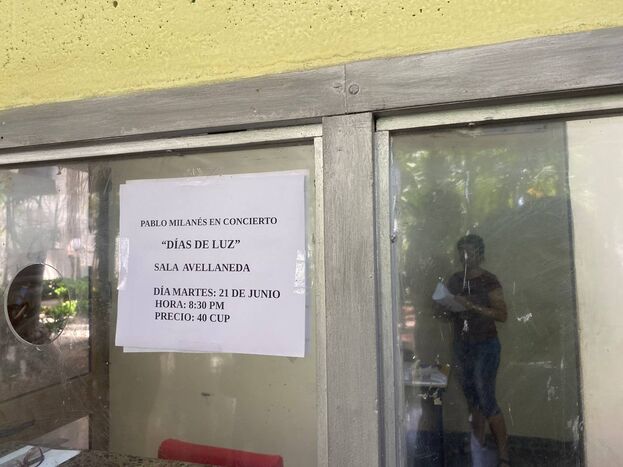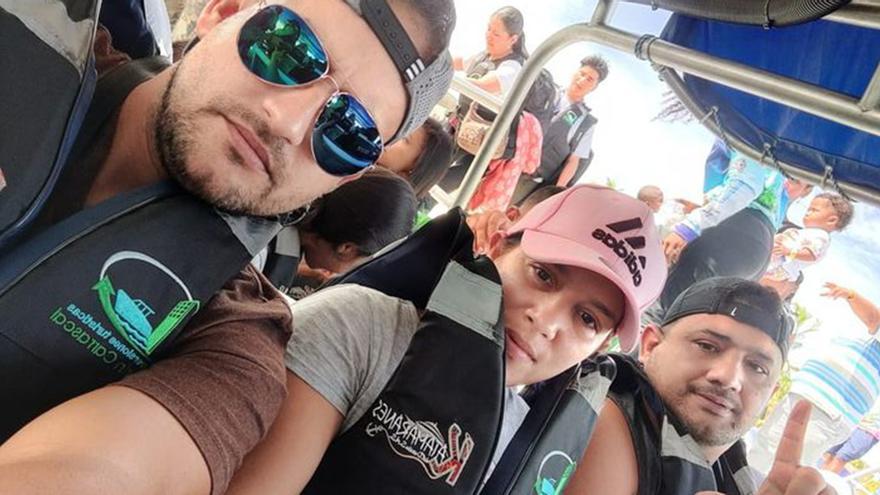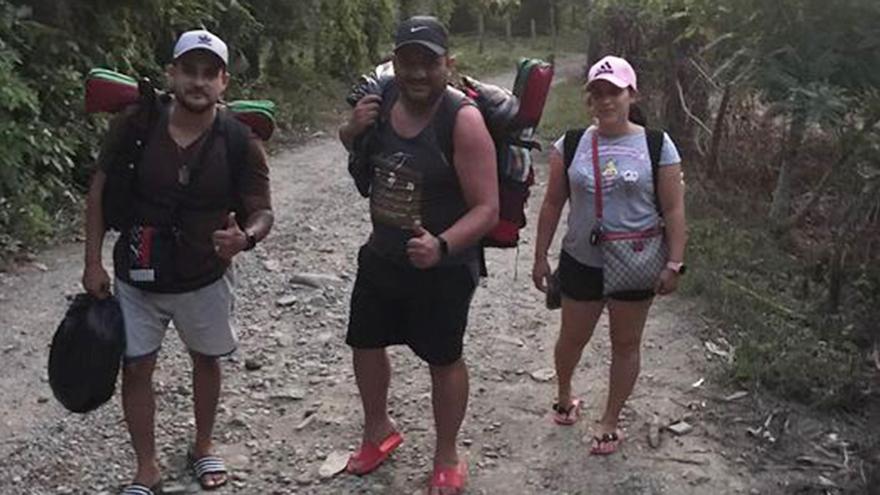Really, can you imagine Macron, Sánchez, López Obrador, I don’t know, even Biden, in a similar situation? Impossible. In all those countries of the world, the electricity supply, although more expensive due to the war in Ukraine, doesn’t stop. There are no blackouts, and the people and industry live normally.
The blackout is the essence of the Cuban revolution. And it isn’t a recent phenomenon. Already in the 1960s, many Cubans went to bed without knowing the end of the television series of that time, because the electricity was cut off, unexpectedly. Afterwards, the blackouts became daily existence during the Special Period, and now they have returned again, creating a growing discomfort in the population, which is no longer willing to accept silly explanations from their leaders.
Díaz-Canel, for whom the communist state press spares no flattery and usually presents him as the fighter he isn’t, continues to insist that the problems of the electrical system come from the American blockade [i.e. embargo], or from flaws in the work, but he never recognizes his direct responsibility in the facts, In his analysis of the problems.
And so, boring everyone, Díaz-Canel unloads a whole theory about “peaks and valleys” that shouldn’t occur in supply, and consumption during the hours of the day, which explains, according to him, what is happening. What happens is the same thing that happens in other countries, such as Spain, for example, where the intense heat of summer forces air conditioners to be turned on, but electricity continues to work. No one there thinks of unexpected blackouts. continue reading
Now Díaz-Canel wants consumers to use electricity at other times, outside the “peaks,” to mitigate demand. According to him, thermoelectric plants have the capacity to generate what the country needs when there are no peaks, and they do so with national fuel, a product that is also available to work for stability. The solution seems clear.
The problem is that the thermoelectric units of the Felton and Guiteras plants don’t function continuously because they’re obsolete and require investments and maintenance that weren’t carried out at the time, and now they fail continuously and unexpectedly. In the absence of such a supply, the “peak” reappears at any time of day and after a blackout because there is no other source of electricity. No one in 62 years has really thought about how to improve the energy supply in Cuba, by resorting to renewables, for example.
And at this point, Díaz-Canel’s explanations went in other directions, such as the signing of agreements to establish three new power plants and the possible future growth with a fourth plant. However, this isn’t an investment that can be made in the short term, and solutions such as mobile power plants won’t solve the problem either.
He even referred to the boiler deposits that are created by the national fuel, which, if not taken care of, could cause the loss of generation capacity. Even distributed electricity generators that consume large amounts of diesel aren’t the solution to the problems of crude oil supply.
Recognizing the seriousness of the problem, what can be done? You can’t stand idly by.
The proposed solutions are also enough to keep you up at night.
It is intended to use tourism revenues to finance investments. But, of course, the tourists who arrive are still few, and the income is small, so this route is impractical. Before the solution was to build hotel rooms, it seems. The same happens with the revenue in MLC [freely convertible currency] stores, which, despite the commercial margins of 200% and 300%, is barely enough to replace products. Hence, the shortages that we see in these stores. The money raised from tourism and MLC shops has barely helped to buy fuel and allocate resources to maintenance and repairs. The beans have been counted.
The other solution is to fix first what gives more generation capacity to the electrical system, which has led to the prioritizing of the Felton and the Guiteras, with all the difficulties derived from the obsolescence of these plants.
And then Díaz-Canel proposed energy savings, transferring the problem to individual and collective responsibility. It’s the same populist argument as always, as if three million of the four million homes were to turn off a 20W bulb that may be unnecessarily lit, that would instantly represent a power of 60 MW, the same as a generation block of Renté or one of October 10. It’s incredible that such efforts are requested from the victims of the blackouts.
After Díaz-Canel, Liván Arronte, Minister of Energy and Mines, spoke. He referred to what he called “the cyclical situations that have occurred in the electrical system, causing the worsening of the situation in recent days.”
And he returned again to the incidents of Unit 2 of Felton, which is nothing more than an accumulation of nonsense derived, as already mentioned, from the lack of investment and attention in recent years. He likewise referred to the Guiteras thermoelectric plant, which is equally affected by the same maintenance problems.
The minister went so far as to say that the 200 MW of reserve of the electricity system, often due to instability and problems, are not reached, which at any time causes blackouts. But he said nothing about what to do to overcome these problems.
What Arronte did talk about is the burning of national crude oil in thermoelectric plants, which although it gives sovereignty from the energy point of view because it’s our fuel, its high sulfur content causes the dreaded fouling and corrosion in the boilers, which has to be compensated for with systematic maintenance, like cleaning and replacement of parts and aggregates.
That is, using national crude means that we have to do more maintenance, but it’s the available fuel, and in the face of the high prices of the international market, it’s the country’s solution to be able to guarantee electricity generation. In other words, there will be more blackouts.
Arronte did not miss an opportunity to remember that the electrical problem has a lot to do with the blockade, not only for the acquisition of fuels, but also for the resources needed to repair the units, requiring the purchase of parts through second countries.
Omar Ramírez Mendoza, the Deputy Director of the Electrical Union, participated after Arronte and advanced much more technical issues that were interrupted by Díaz Canel.
Ramírez was very clear. Maintenance is done, but not always with the depth it takes because there is no time available to meet demand and avoid blackouts. The other reason is that the teams that need the resources to intervene don’t have them available, so using them runs the risk of increasing the damage, or resulting in a greater need for intervention than expected.
At this point, Díaz-Canel recognized that there is a state of discomfort in the population that he described as “logical, and that had two dimensions: one on a personal and collective level in the population, who suffer directly from blackouts, and the other is that the economy is affected, which has to do with guaranteeing services and goods to people.”
And, in this regard, he pointed out that “states of opinion express discomfort, but also understanding, so it is necessary to highlight the way in which the people, living in a rigorous, demanding situation of limitations, have been able to understand for the most part that this is not the fault of a government that doesn’t occupy itself or a weakness in the work of the institutions, but has to do with the aspects addressed.” In this regard, Díaz-Canel is wrong, because most Cubans know who is responsibile for the blackouts. What they don’t understand is that they continue to occur, despite the fact that, as Díaz-Canel says, “a lot of work is being done to solve the problem.”
After briefly referring to the difference between real power and the available power of the plants, he spoke of an accident that occurred at the Máximo Gómez plant in Mariel, which caused Unit 6 to now need (and this is being addressed) the import of components needed to bring it to 100 MW, while Unit 7, which produces 90 MW, was completely lost.
Then came explanations for accidents and similar events at the CTE Otto Parellada, Tallapiedra, and Ernesto Guevara power plants in Mayabeque, the CTE Antonio Guiteras and the Felton in Holguín, and the Renté in Santiago de Cuba. Speaking of the plants in service and those that are paralyzed, and the planned entry into operation of the plants, Díaz-Canel threw out even more confusion and, of course, if he wanted to give peace of mind to the people who watched the program, forget about it. The live connection during the program with the authorities of different thermoelectric plants in the country did very little to give that peace of mind to the people. There was only some positive news about the Nuevitas thermoelectric power plant that apparently is overcoming its problems.
At this point, Mario Pedroso, Director General of the Company of Generators and Electrical Services, referred to the actions that are being taken with the diesel groups to make up the deficit of thermoelectrical generation with distributed generation.
Geysel is an electric generator maintenance and operation company that has representation in all the provinces of the country, and whose fundamental task is aimed at working on the peaks, to evacuate contingency in the system or to guarantee amendment during a natural disaster. To do this, they have 943 generator sets of different technologies and an installed power of 1,334 MW. In these cases, breakdowns due to lack of maintenance accumulate and increase their frequency due to common use.
Of the 943 electric generators, there are only 579 MW available and 348 MW of the 1,334 potential ones. The availability of diesel will be compromised in the coming months if the forecasts of the world economy are met, and that may be even worse for this energy option. They recognize it themselves. There are difficulties with the supply of diesel fuel, and in many cases the fuel needed for power generation hasn’t been delivered in a timely manner, which has strained the country’s fuel distribution system. In other words, the possibility of a quiet summer is increasingly in the air.
Later, Pedro Sánchez Torres, Director of the Oil-Fuel Electric Generator Maintenance Company, announced that they have some 950 MW installed as part of Cuba’s base generation in 489 machines in 33 power plants, located throughout the country.
In this case, he explained that the company is going through a complex situation today with respect to spare parts that in recent years they haven’t been able to acquire, not only because of the financing, but also because of the complexities in access to the factory where they can be supplied, since they have been forced to use third-party suppliers. This has meant 506 MW in breakdowns, more than 200 MW that they haven’t been able to recover and 163 MW in maintenance that they haven’t been able to recover. Nor should there be favorable expectations.
In the end, Ramiro Valdéz, who had been listening to the entire program in silence, but with obvious blushing, said something like “we need to work in function of living from the electric-energy point of view in a balance with the budget of each household” and closed. The historic generation has less and less confidence in the heirs, and they realize that it’s over.
Translated by Regina Anavy
____________
COLLABORATE WITH OUR WORK: The 14ymedio team is committed to practicing serious journalism that reflects Cuba’s reality in all its depth. Thank you for joining us on this long journey. We invite you to continue supporting us by becoming a member of 14ymedio now. Together we can continue transforming journalism in Cuba.
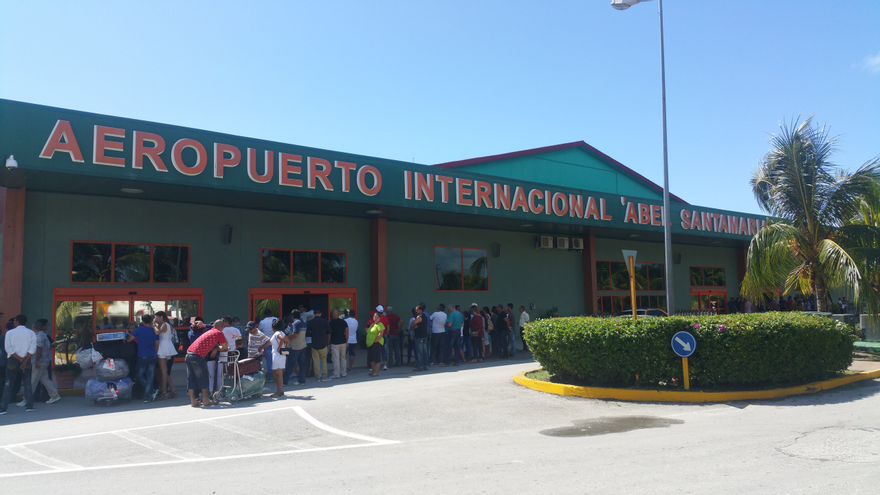
![]() 14ymedio, Havana, 14 June 2022 — Almost a week after the first charter flights from the United States to Santa Clara and Holguín, Cuba, were announced, starting this Thursday, the Cuban Airport and Airport Services Company (Ecasa) announced the complete schedule of operations to the rest of the the provinces of Cuba during this month.
14ymedio, Havana, 14 June 2022 — Almost a week after the first charter flights from the United States to Santa Clara and Holguín, Cuba, were announced, starting this Thursday, the Cuban Airport and Airport Services Company (Ecasa) announced the complete schedule of operations to the rest of the the provinces of Cuba during this month.
